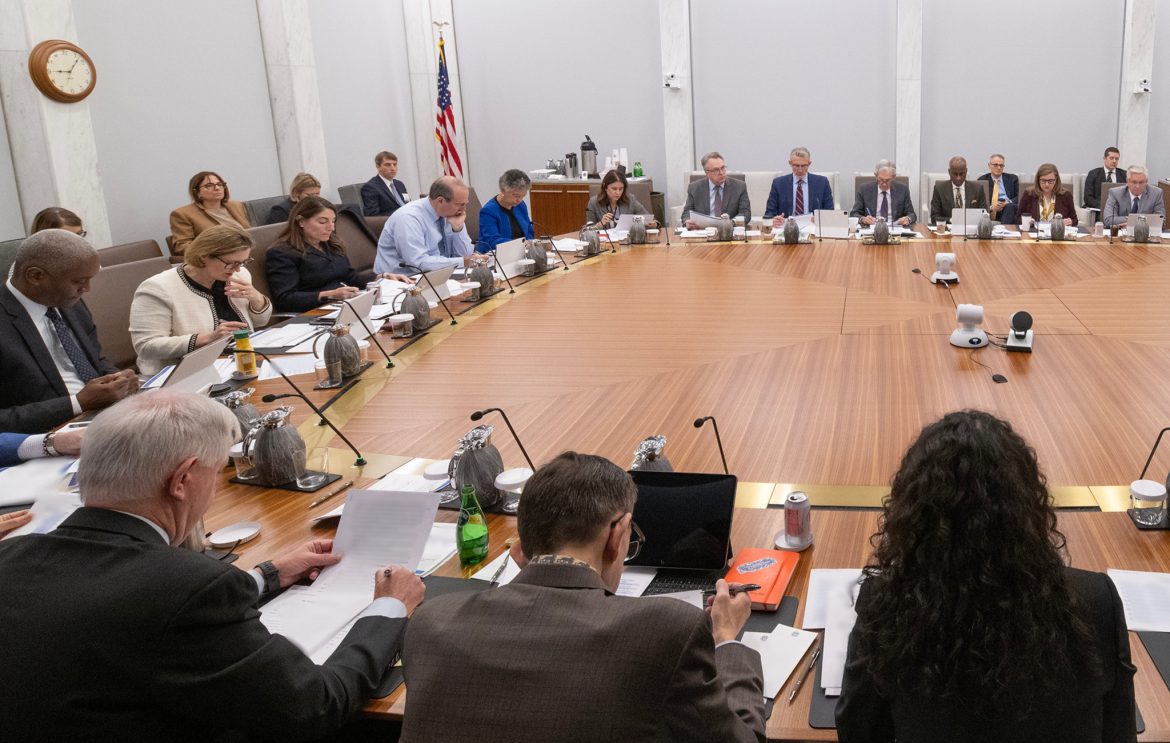On Wednesday, the Federal Reserve lowered its federal funds target range by 25 basis points, to 3.75–4.0 percent, its second cut in as many meetings. The move came as no surprise to markets, which had largely anticipated another reduction despite inflation remaining stubbornly high. Two officials dissented in opposite directions: Governor Stephen Miran favored a larger 50-basis-point cut, while Kansas City Fed President Jeffrey Schmid preferred to hold rates steady.
At his post-meeting press conference, Fed Chair Jerome Powell reiterated that policymakers face challenges on both sides of the central bank’s dual mandate that calls for a “balanced approach.” Although the government shutdown has delayed the release of official labor market data, the available evidence suggests that hiring has slowed and conditions continue to soften even as inflation remains above the Fed’s two-percent target.
Still, Powell said economic activity is expanding at a moderate pace. Gross domestic product grew 1.6 percent in the first half of the year, but data released before the shutdown indicate that growth may be running somewhat stronger than expected, driven by resilient consumer spending and steady business investment. He cautioned that the shutdown will temporarily weigh on output but added that any drag should reverse once the government reopens.
Job gains, Powell noted, have slowed noticeably in recent months as labor-force growth weakens, reflecting lower immigration and participation. Labor demand has also softened, with both hiring and layoffs remaining low. Surveys show that households see fewer job opportunities and firms report less difficulty finding workers — both of which are signs of a cooling labor market. In short, he noted, “the downside risks to employment appear to have risen in recent months,” which is why the Fed decided “to take another step toward a more neutral policy stance.”
Powell acknowledged that inflation remains above the Fed’s two-percent goal. He said overall and core Personal Consumption Expenditures (PCE) inflation was running around 2.8 percent through September — slightly higher than earlier in the year — as goods prices have picked up while services inflation continues to ease. Short-term inflation expectations have risen this year, amid new tariffs, but longer-term expectations remain anchored near two percent.
Powell observed that “higher tariffs are pushing up prices in some categories of goods, resulting in higher overall inflation,” but described the effect as primarily a one-time increase in the price level rather than a lasting source of inflation. Even so, he warned that these cost pressures could persist longer than expected and said that the Fed would adjust policy if necessary to keep inflation under control.
The Fed now faces a “challenging situation” with “no risk-free path for policy,” Powell emphasized. Inflation risks remain tilted to the upside, while risks to employment have grown on the downside. Tightening policy too much could further weaken the labor market, but easing too quickly might reignite inflation pressures. Consistent with its framework, the Fed is taking what Powell called a balanced approach to managing both sides of its mandate. With the labor market softening, he said, the balance of risks has shifted, prompting the committee to take another step toward a more neutral policy stance.
The Fed, Powell added, remains well positioned to respond swiftly to new economic developments. Policymakers will continue to be guided by incoming data and the evolving balance of risks when setting the stance of monetary policy. The central bank still faces uncertainty on both sides of its mandate, and committee members hold sharply differing views about the path ahead. Powell stressed that policy is not on a preset course, and that “a further reduction in the policy rate at the December meeting is not a foregone conclusion — far from it.”
Alongside its rate cut, the Fed announced it will end the runoff of its balance sheet on December 1, concluding more than three years of quantitative tightening. Powell said the move reflects the Fed’s “long-stated plan…to stop balance sheet runoff when reserves are somewhat above the level we judge consistent with ample reserve conditions.” He pointed to tightening financial conditions in short-term funding markets. The decision, Powell noted, represents the “next phase of our normalization plans” that is designed to preserve stability rather than to signal a new policy direction.
The Fed’s latest moves reveal a central bank struggling to navigate competing risks with imperfect tools. The dual mandate practically requires monetary policymakers to treat rising prices and falling employment as opposing problems rather than considering the extent to which the movements in prices and employment are consistent with the underlying fundamentals. A nominal GDP target would collapse the false distinction between the two sides of the mandate, allowing the Fed to stabilize demand directly and let prices and employment adjust naturally. Such an approach would reduce the need for fine-tuning and spare policymakers from having to choose — again and again — between fighting inflation and protecting jobs.
